Antia Caldeiro | Eva Maria Bouillon | Jules Emiel Devoldere | Leif Houllevigue | Maria Morales Arango | Myrthe Vynck | Sam Debaecke | Sara Tremblay | Siel Billiet
My Hands Do Not Dig Mountains
Variable dimensions
Sand, charcoal, red tape, rainwater in glass bottles with labels, photographic color
prints, sound loop.
The landscapes that are part of this project are far from cities, they were used by industry and finally abandoned. In these landscapes, marks have been left behind or some parts have disappeared, resulting in a “lack” in the landscape. These traces and remains have straight, geometric shapes. They marked the natural elements of the landscape with artificiality. Artificial is everything that results from what people do. I have always been impressed by this strange equivalence between what a machine does and what a person does on their own.
These landscapes are located in my homeland. In them I perform actions related to constructions or movements of machines, interpreting these traces as a kind of choreography of walking. For me, walking is a way of knowing and discovering space, not only in a physical way, but also in a sensory way based on experience. Through the observation of the elements, I try to situate myself as a human body in the landscape. Brussels, where I lived during this last year, is made up of pieces of landscapes that have been taken from their place of origin and moved here, arranged in the form of heaps. I identify myself with these landscapes as a body taken from its context and transported here. In the months that I have been in Brussels, I have collected some samples of heaps as well as rainwater. I am certain that many of the water particles from Brussels rains once also watered my homeland and circulated in its rivers. Will they send me their regards?
About Antía Caldeiro,
Born in Spain, 1994
Graduated with an MA in Photography from Luca School of Arts (2019 - 2020) and with a BA in Fine Art from the University of Castilla La-Mancha (2015 - 2019). In 2017 she studied for a year at Manchester School of Art as an exchange student. Also, she studied a technical course from the EASD Antonio Failde (2012-2014).
Contact
rodriguezcaldeiro@gmail.com
+ 34 661 00 62 81
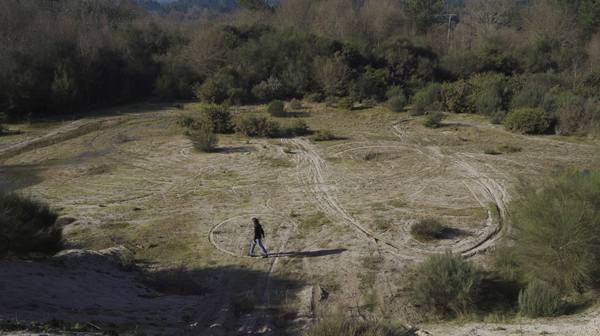
House for Two
In this film, the camera depicts a couple in a setting of their everyday life. At first glance, the images look like photos. A closer look at them shows slight movements – such as breathing. When one shot fades and the next one is seen, the poses and the position of the camera change. The actions in between, and the family history behind the images are not visible. So, these changes are perceived without any further context, leading the viewers to complete the story with their own interpretations.
About Eva Maria Bouillon
Eva Maria Bouillon was born in 1997 in Bruges, Belgium where she now lives and works.
She received her Bachelor’s degree in Visual Arts, Photography at LUCA School of Arts (Sint-Lukas Brussels, Belgium) in 2019.
Her work has been included in several group exhibitions in Belgium.
Contact
+32 479 11 81 24
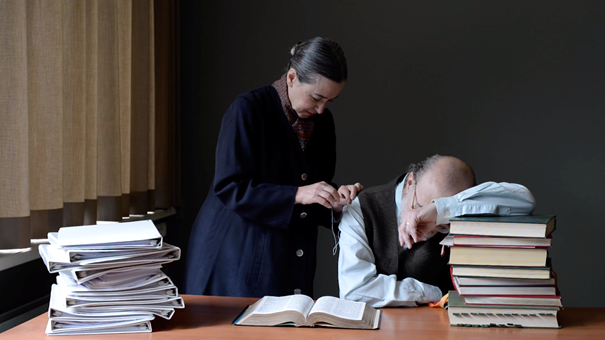
Wallflower
Something initially started as an ambition to document places that face the consequences of anthropoid abuse. Soon it grew into an examination of my archive, which had already bore witness to a particular imbalance between man and nature. The despair of human activity transforms the land around us. Our surroundings are becoming more and more constructed, and as the artificial intertwines with the natural, new landscapes begin to take form.
The struggle of looking for an approach for this concern found its way into a scrapbook. It became a place where the doubt of not knowing, and the uncertainty of how to express, became visually graspable. By zooming in on different parts of the landscape, I visually explore the boundaries where nature transcends human intervention and the limits of confinement to which it succumbs. I wonder how our human presence is perceived in a world where the traces of human abuse are unmistakable.
Wallflower is an impression of space, shaped and reshaped, in an attempt to define and express thoughts of appreciation and concern for our natural surroundings.
About Jules Emiel Devoldere
My name is Jules Emile, and I am a 25-year-old freelance documentary photographer from Brussels. By actively working on personal long-term projects in Belgium as well as abroad in the United States and other countries, I have gotten to experience different world views and cultures. As a result, my work is socially layered, and carries a strong sense of community.
Statement
The foundation of my practice finds its origin in street- and documentary photography but it has grown in many different directions since. I feel the most comfortable when wandering through unfamiliar environments. The unexplored has always had its grasp on me, and invited me to investigate and document with curiosity.
Nowadays, within my practice, I am particularly interested in looking up the boundaries of fact and fiction. The place where these both meet, and clash together like the waves of the ocean crash into monumental cliffs. I am not interested in manipulating the scenes I photograph, but I strive to attain a seemingly calculated composition of the visual elements in my imagery. The way these all come together is very fortuitous and poetic, the outcome of a good amount of patient observation. I have an admiration for the random that brings forth an intimate and delicate scene.
Though I do not orchestrate my photographs, I realize that I take on the role of director. I decide what piece of reality to show, as I have perceived it. Through juxtaposing images of different origins, I try to spark wonderment for the viewer. I appreciate how the ones observing with different perspectives, come up with different narratives and give essence to what they see in my body of work. Just like waves that hit the cliffs on the edge of a vast ocean. Over time they chisel away a new rockface, like fresh perspectives on an alternate reality.
The way I practice photography can be seen as the process of searching for something precious that is not easily found. When it is found, it causes exhilaration, feeding the will to look for more. Similar to a quest for small clumps of gold. Or like looking for shark teeth.
Contact
instagram - @lesphotosdemile
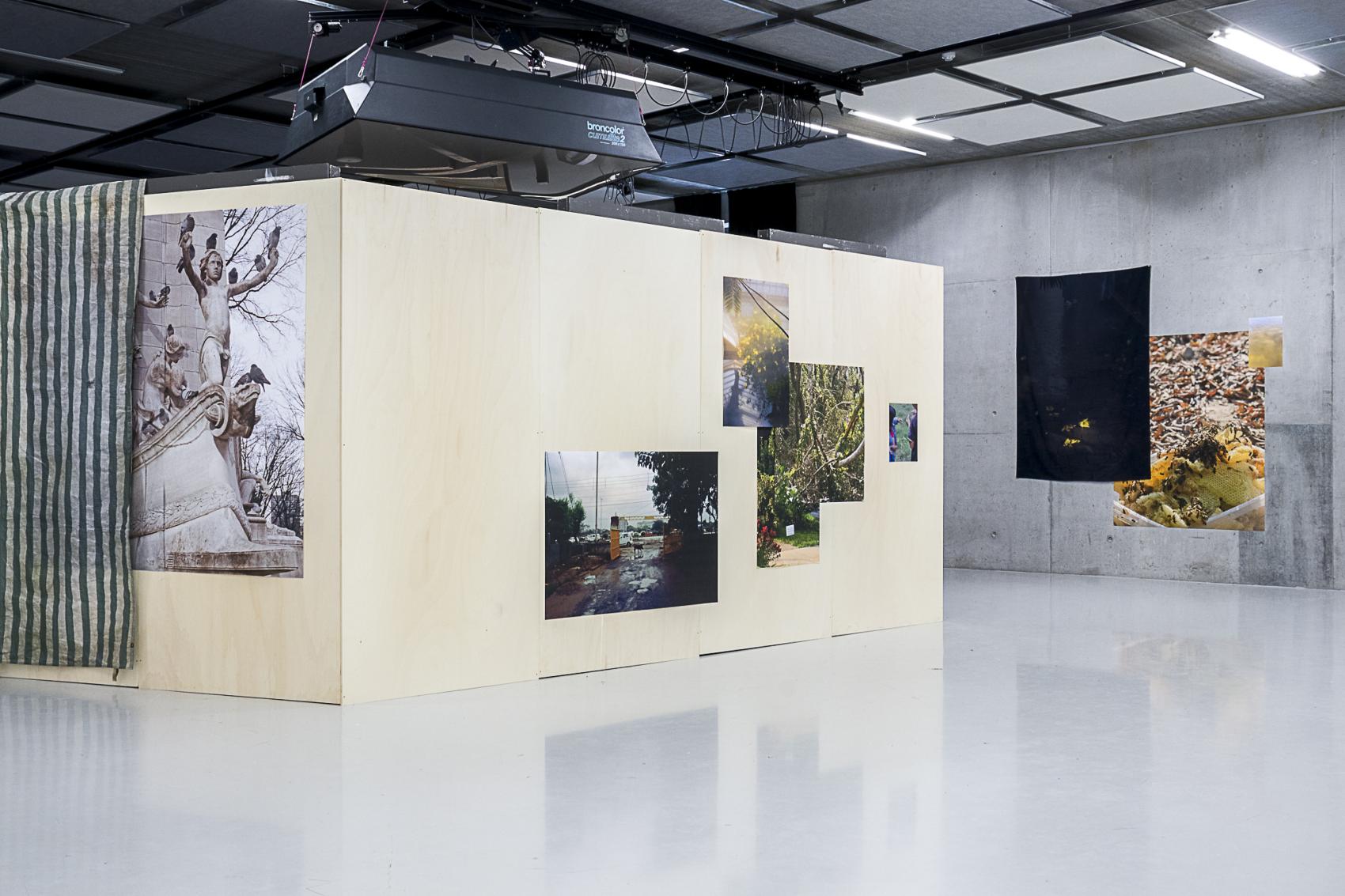
CAPHARNAÜM (2013- ONGOING)
The word capharnaum, meaning a place with a «disorderly accumulation of objects»or «obscur storeroom», is derived from the town’s name that also means «village of consolation».
«Capharnaüm» shows the accumulation on the basis of daily practice where photography becomes an obsession. The «banal» and the «trivial» in everyday life has a real interest and allows me to question the meaning of «heroes» in my environment. It is a way of working that is emotional and not specifically limited to a subject or a place but by the truest astonishment about «heroes». The «hero» here is someone who is completely banal and who gets lost in the chaos of insignificant details until he becomes a part of it.
A stark, cold, tough, dirty, hot, dry, humid, soft, sticky, fragile and slipping world. The sight scans just about everything in its path, but the gaze selects.
As if the detail is of a radiant colour among a grey layer wrapping everything around. The importance of detail. The vibration that these atmospheres are giving me. A kind of fascination filled with wistfulness, hope and solace. That doesn’t mean that they are necessarily positive images that make me smile. They are carrying an emotional charge, these images, these surroundings are beautiful, joyful, sad, wistful; like life is made of peaks and troughs.
These fragments asemble together. Like small elements with emotional charges that come together and make one. To portray a situation, an experience; a mental state, an emotion, a set of things.
A guiding line in the form of a question mark then emerges, solace and wistfulness, the anxiety of existence, the disquieting part of ourselves, and the solitude.
«Under the weight of the yellow lights, it feels like to be in a movie. A film in which the character is trapped in an overwhelming set of situations.
Looking out the window. The 18th, Paris, Barbès, the Goutte d’Or, the boulevard, the exit or entrance door. It’s a capharnaüm, screams, siren car, vibrations. A working-class district, noisy and supportive. The frozen land, the dripping nose... nosediving, sticking your head out of the window. Public places, a terrace, memories a little more confused, one more hangover... A rockstar’s life without glory or stopovers.
It’s monotonous and endless. It’s the snake biting its own tail. The elbow sticking to the zinc of a bar, ‘70s panelling, the smell of cold tobacco. Living to the rhythm of synthesizers and dying to the rhythm of health. An industrial wasteland. Dinner in the company of a wall. The smell of sausages at the Christmas market, a beautiful winter sun to which the thin rain’s layer invites itself. More and more bricks, rubble, stains and stones, face to face with concrete. Overwhelmed by all these details.»
Contact
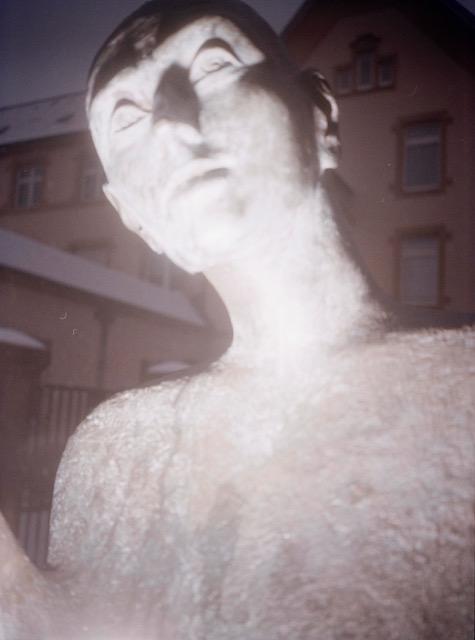
The Nymph’s Accident
video projection, sound and art-book
variable dimensions, 14 minutes
This work is a screen recording of a 3D space where the spirit of a trapped Nymph manifests through digital waterscapes. It is a video based on a theatre script I wrote about an artist who accidentally caught a nymph with her camera, while recording the waters of a thermal spring. The video of these “original” waters, appears in a second screen besides the projection of the digital space. As nymphs are shape-shifting creatures, in the virtual dimension, this mythical being’s materiality is transformed into light, and her voice merges with her memories of water and nature, but also with other representations of water and virtual spaces that are found in the artist’s computer, which is now her new environment.
About María Morales Arango
I am a Colombian artist currently based in Tilburg, Netherlands. Through the work I research my bodily states and their relation to the different dimensions I inhabit: From the digital space which is becoming more immersive by the second, to the space of nature, mythology/fiction and the body. These dimensions are interconnected worlds which I navigate and weave through my artistic practice.
I am concerned with my body’s sensations and mental processes, and also with its dialogue with history, language, society and nature. Through the media of photography, digital constructions, video, performance, and writing, I intend to create spaces that are between the context where the image is taken, and the new reality the image becomes through interpretation.
As I zoom into a place, a body or a material, another micro-universe appears and expands, blurring the limits between its inner reality and its outward projection. The interest in myth as a type of language is transversal to my practice.
From religious connotations and archetypal imagery charging the definition of the female body, to the contemporary multiplicity of re-definitions and questions, our bodies are an intertwining of imagination and matter.
My artistic practice springs from a series of questions and sensations that appear as I dig into my biosphere and mental space. I am aware that as every human I have a discourse about reality, a story that I tell myself about the world which comes from the hybridisation of what I have learned and un-learned from my cultural background, together with the knowledge I discover in my body and in other beings and elements from nature, that inhabit their spaces in particular ways.
What I learn from nature, is that our existence is a fragile balance which needs to be understood from a more horizontal point of view, where hierarchies should be questioned in order to rescue the value of other kinds of life that do not have “a head, a body, and feet” that are not limited to a “human-animal” form but that exist through an extensive weaving and unlimited growing and transformation.
In this sense, I aim to create art that grows towards the invisible and unclassifiable, I want art that touches and plays with other dimensions, and that invites humans to explore their perception of the world, so that their ideas become more flexible and prone to transmutation.
Contact
https://www.mariamoralesarango.site/
instagram: @mariamoralesarango
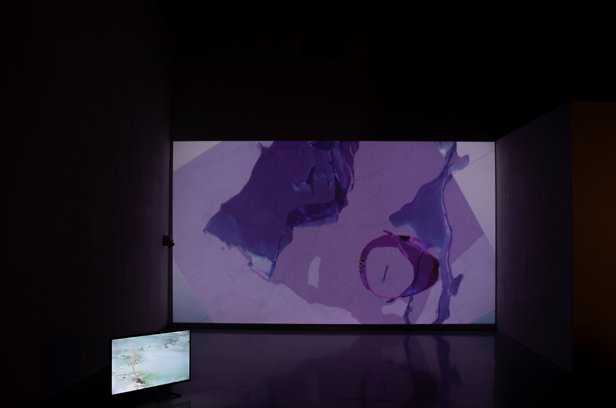
The Window Is a Black Mirror
HD projection (4:3), colour, wooden screen, sound, English spoken, loop (16’)
A female figure travels towards the East. The things she encounters during her journey makes her remember and reflect upon other encounters and past events.
Traveling holds up a mirror and allows to reflect on the own culture, viewpoints, thoughts and ideas. A constant state of movement and uncertainty characterizes my work and personality. In addition to this personal approach, I want to produce material that stimulates awareness and/or reflection, as well as emotion and/or wonder. My work hoovers between the audiovisual and the visual, movement and stillness and is a research into the relationship between text and image. The title of the project, The Window Is a Black Mirror, refers to the black image and in turn refers to the process of memory, the act of reflecting and contemplation.
Contact
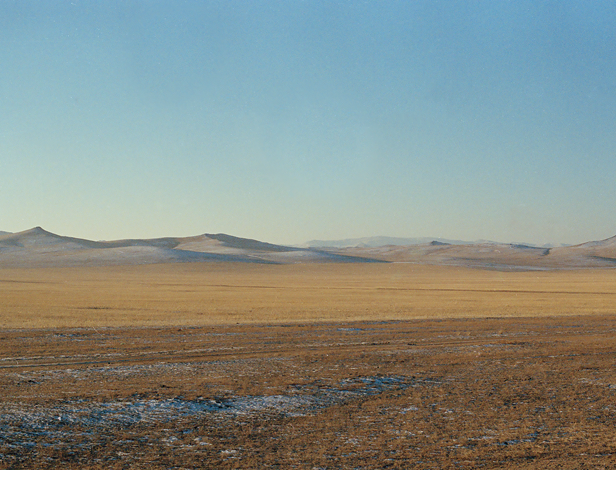
Recordings of the house, Series of 12 photographs, variable dimension, 180g mat paper
a selection of photographs from the image bank made in December 2019
Portrait gallery,
Herbarium,
Bestiary, 3 videos, color, video-projection in loop
3 attempts of playful organizations of cropped details from the image bank
I put the objects of value in the bank safe, Audio piece, 10min
a poetic reflection on the artist’s investigation, a play of analogy between the house and the medium of photography, places for conservation
The project “The shutter of the house; the shutter of my camera” takes as a starting point the selling of the house of her grand-mother, in Bourgogne, which was uninhabited for 18 years. Sara felt the urge of building up an image bank, in order to keep a trace of the house and its contents. This photographic material has become a kind of pixeled house where she could travel inside, in search of meanings, personal attachment and connection to her artistic practice. This investigation has led to a set of works, drawing an encounter of different distances of look on this digital and emotional space.
About Sara Tremblay
Sara Tremblay is a French artist who works with photography, film and text. She obtained a bachelor degree in Fine Art in 2018, at the National Art School of Lyon (ENSBA), and did a master of Photography in Sint Lukas Brussels, where she obtained her diploma with honours in 2020.
She’s interested by challenging and revealing the act of perception and observation through her works. Her writing is a back and forth between personal experience and the places she is looking at, reflecting as well on the instruments and mediums she is using. She’s recently developing a documentary writing that meets her experimental film practice.
Contact
instagram: @saramenedutiff